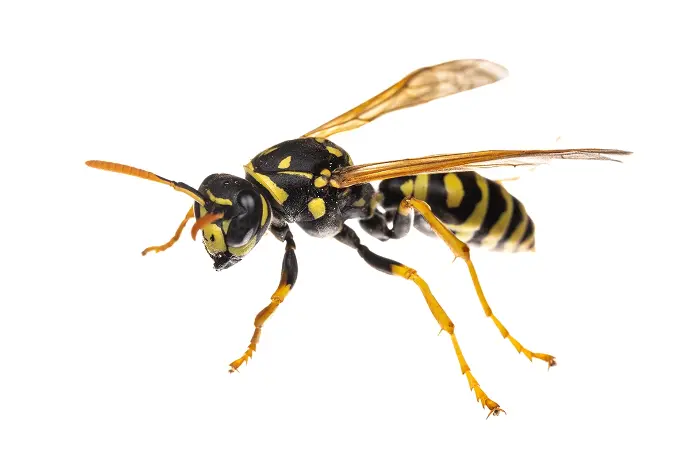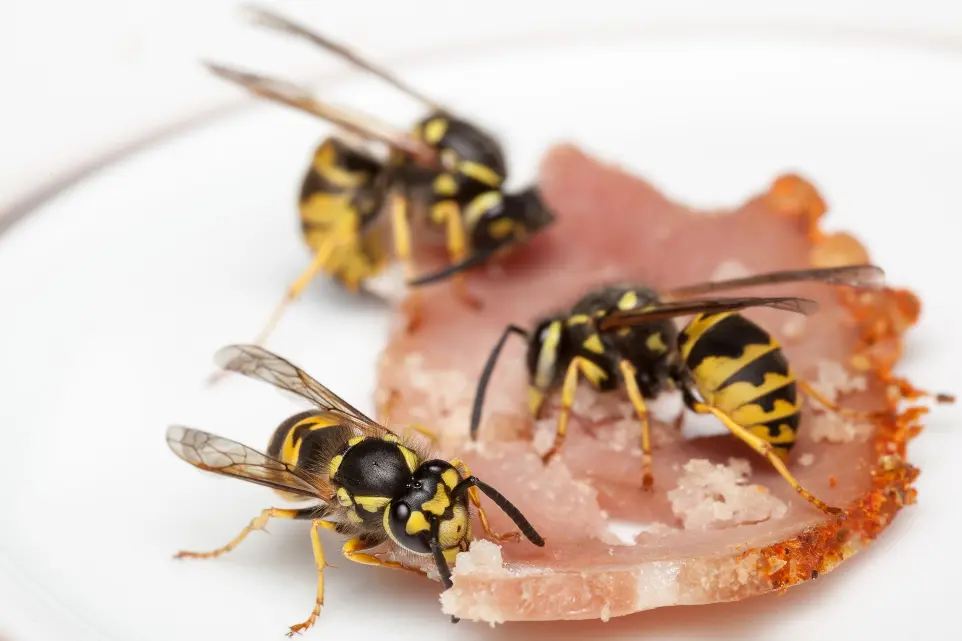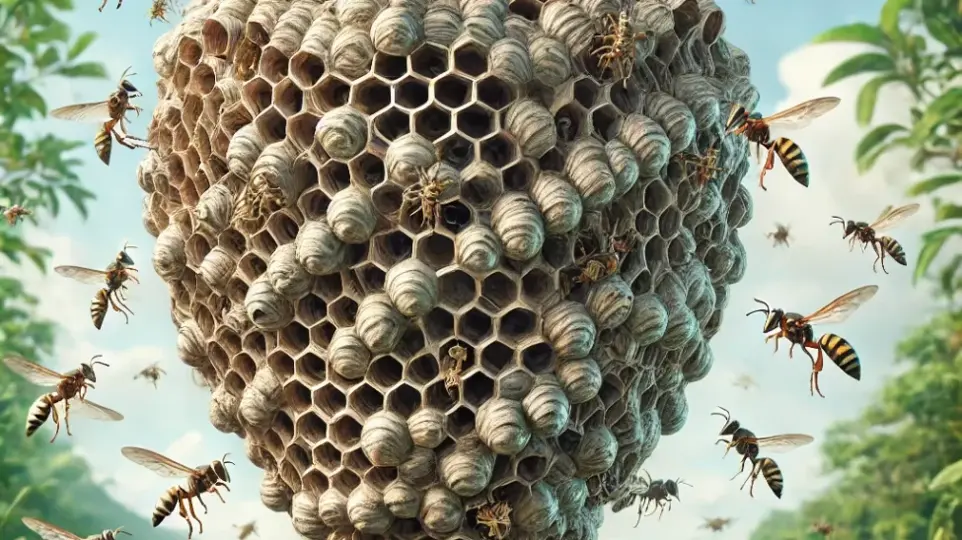Graceful Builders, Unwanted Guests: Understanding Paper Wasps and Their Habits!

Paper Wasp (Polistes)
Size: 1.5–2.5 cm (adult)
Color: Reddish-brown, yellow, or black with distinct markings
Body Shape: Slender with a narrow waist
Wings: Long and translucent, resting flat over the body when not in use
Eyes: Large and oval, laterally on the head
Antennae: Medium-length, segmented, and slightly curved
- Recognizable for open, umbrella-shaped nests made from chewed wood pulp
- Flight pattern is slow and deliberate

Feeding Preferences
Paper wasps primarily feed on nectar from flowers, which serves as their main energy source, but they also hunt small insects like caterpillars to provide protein for their young. In populated areas, they are attracted to sugary residues, ripe fruits, and exposed food scraps. Their foraging often brings them to gardens, compost piles, and outdoor dining areas. This behavior can make them a nuisance in places where food is left uncovered. Keeping such areas clean and free of food debris can reduce their activity.

Habitat
Paper wasps are often found in sheltered areas that provide protection and easy access to food sources. They frequently establish their nests in locations such as eaves, ceilings, window frames, and other undisturbed corners of buildings. These insects prefer spots with minimal human activity but close proximity to flowering plants, as these serve as food sources. Structural gaps, overhangs, and outdoor furniture are also common nesting sites. Proper sealing of entry points and regular inspections can help manage their presence in populated areas.

UPM's AIR Approach for Paper Wasp:
- Assess: Inspect your home and yard for paper wasp nests in sheltered areas like eaves, attics, and door frames, and assess the severity of the infestation.
- Implement: Apply targeted treatments such as wasp sprays or professional nest removal to eliminate the nest and reduce the wasp population. Ensure proper protective measures are taken to avoid stings.
- Review: Regularly monitor your property for signs of new nests and apply preventive measures, such as sealing entry points and removing food sources, to keep paper wasps from returning.
Frequently Asked Questions
Yes, they help control pest populations by preying on insects and also assist in pollination by feeding on nectar.
Avoid disturbing the nest and contact a UPM Sergeants to safely remove or relocate it.
Yes, unlike bees, they can sting multiple times without dying, as their stingers are not barbed.
Paper wasps have a slender body with a distinct waist and their nests are umbrella-shaped with exposed cells.
They are most active during the warmer months, particularly in late spring and summer when they are building nests and raising young.
Generally, they are not aggressive unless their nest is threatened, at which point they may defend it.
Regularly inspect and seal gaps or crevices, remove potential nesting materials, and discourage food residues around your property.